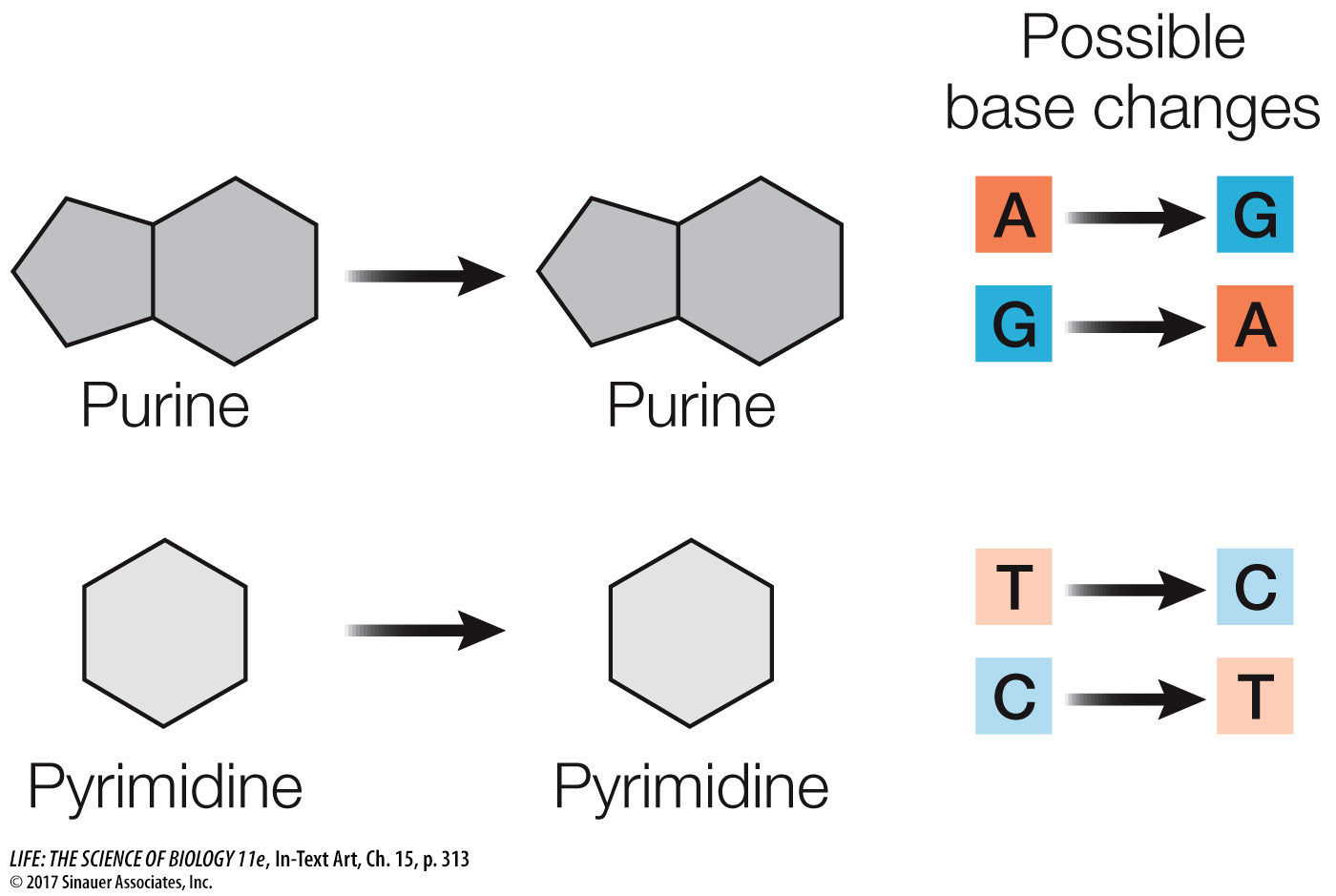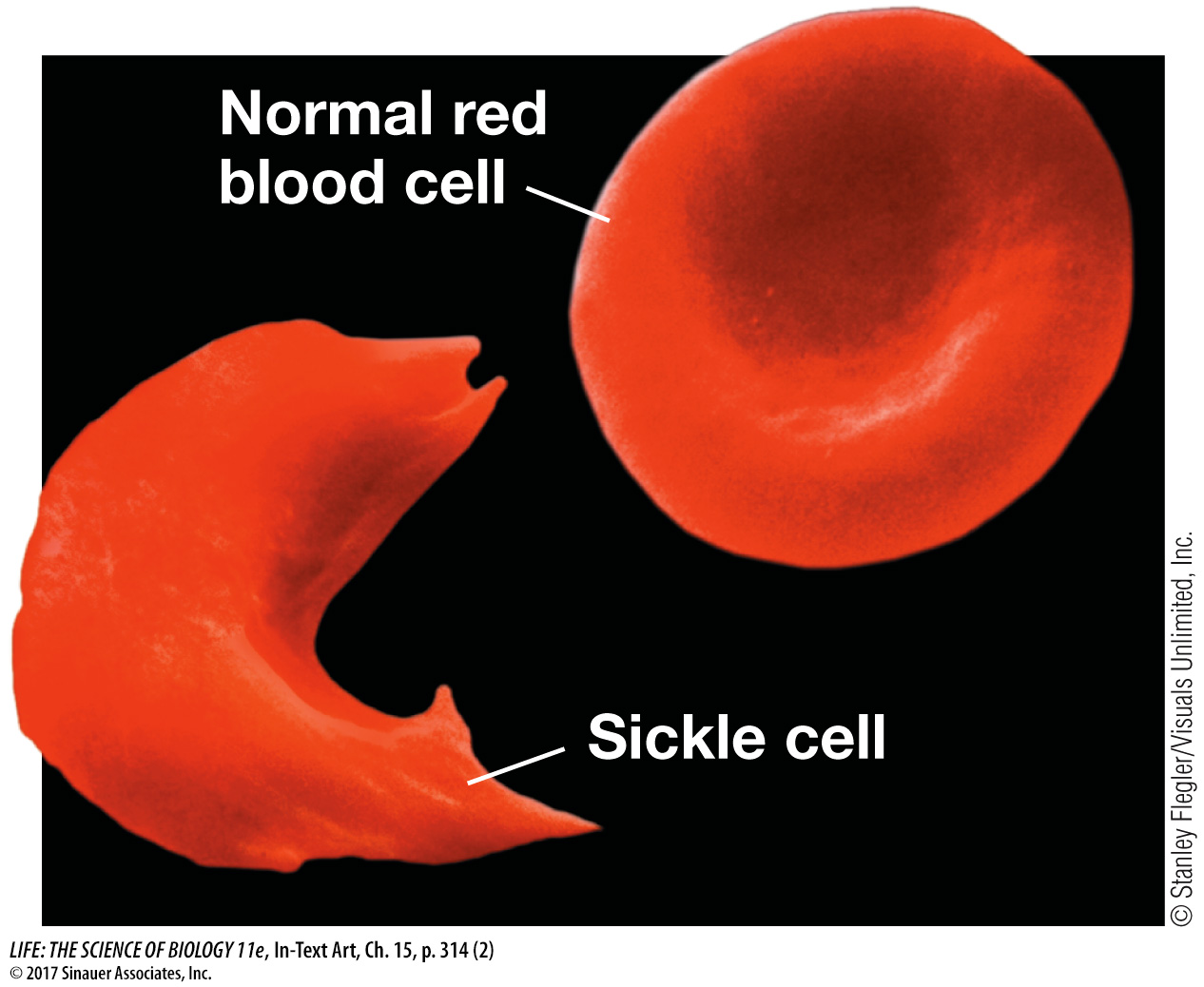Point mutations are changes in single nucleotides
A point mutation is the addition or subtraction of a single nucleotide, or the substitution of one nucleotide base for another. There are two kinds of base substitution:
A transition is the substitution of one purine for the other purine, or one pyrimidine for the other:
 Page 314
Page 314A transversion is the substitution of a purine for a pyrimidine, or vice versa:

A point mutation in the coding region of a gene will result in an alteration in the mRNA sequence. But remember: a change in the mRNA does not necessarily mean a change in the protein that gets translated from it at the ribosome. As we just mentioned, a silent mutation has no effect on the amino acid sequence of an encoded polypeptide. By contrast, missense, nonsense, and frame-
MISSENSE MUTATIONS Missense mutations are *base substitution changes that alter the genetic code such that one amino acid substitutes for another in a protein (see Figure 15.2C). A specific example is the mutation that causes sickle-

*connect the concepts Many base substitution mutations result in changes in protein structure due to amino acid substitutions. Review the relationships between amino acid sequence and protein three-
Media Clip 15.1 Sickle Cells: Deformed by a Mutation
A missense mutation may result in a defective protein, but often has no effect on the protein’s function. For example, a hydrophilic amino acid may be substituted for another hydrophilic amino acid, so that the shape of the protein is unchanged. Or a missense mutation might reduce the functional efficiency of a protein rather than completely inactivating it. Therefore individuals homozygous for a missense mutation in a protein essential for life may survive if enough of the protein’s function is retained.
In some cases, a gain-
NONSENSE MUTATIONS A nonsense mutation involves a base substitution that causes a stop codon (for translation) to form somewhere in the mRNA (see Figure 15.2D). A nonsense mutation results in a shortened protein, since translation does not proceed beyond the point where the mutation occurred. For example, a common mutation causing thalassemia (another blood disorder affecting hemoglobin) in Mediterranean populations is a nonsense mutation that drastically shortens the β-globin subunit. Shortened proteins are usually not functional; however, if the nonsense mutation occurs near the 3′ end of the gene, it may have no effect on function.
FRAME-
*connect the concepts Even in a protein-
MUTATIONS OUTSIDE THE CODING REGION As discussed in Chapter 17, in genomes like ours, much of the DNA does not contain protein-
promoter mutations may alter the rate of transcription of the gene.
mutations at RNA splicing sites may lead to abnormal mRNA.